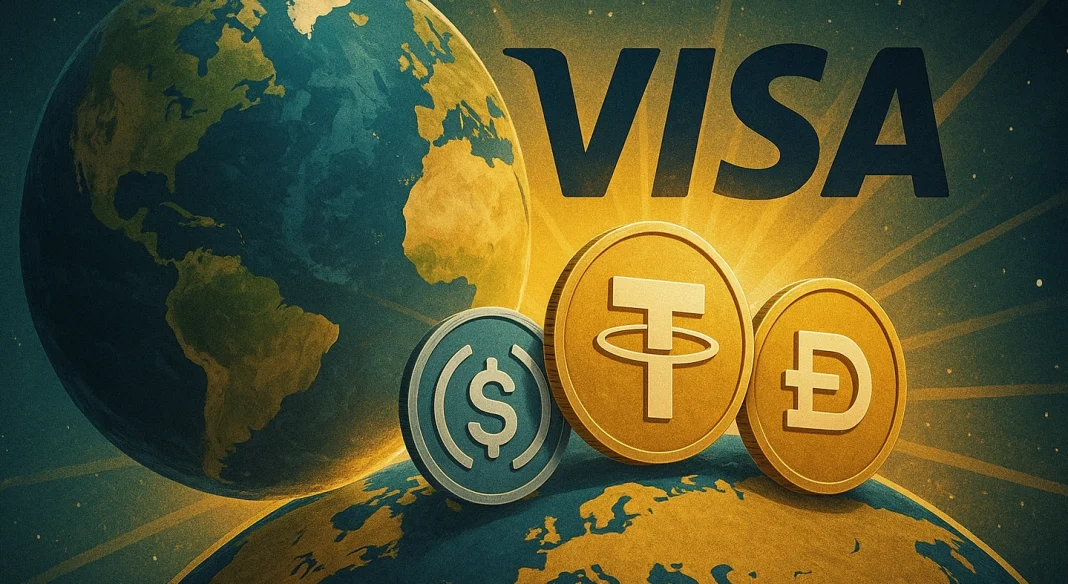Visa’s making moves like a boss in the crypto game. They’re doubling down on stablecoins, partnering with Yellow Card to storm across Europe, the Middle East, and Africa, so this ain’t some small-time hustle.
This move signaling Visa’s bet that stablecoins are the future of money movement.
And hey, if you’re wondering why this matters, it’s because stablecoins are shaking up cross-border payments like never before.
Applying the new technology
Chris Maurice, the big cheese at Yellow Card, put it straight, and told that together with Visa, they’re building a bridge between traditional finance and the future of money movement.

Translation? They’re cooking up payment solutions that are faster, safer, and more transparent. No more waiting days for your money to clear or dealing with skyhigh fees. It’s like upgrading from dial-up to fiber optics overnight.
Visa’s Tokenized Asset Platform, launched last year, is the engine behind this thing. It lets banks create and manage their own stablecoins, and with over $225 million in settlements already, it’s clear this isn’t just talk.
Programmable money is the new black, and with Visa’s global reach, this tech is spreading like wildfire.
The race is on
Also worth to mention, the competition’s not sleeping. Stripe just kicked off a stablecoin trial to help companies outside the US and EU snag US dollars easier. Mastercard’s also jumping in, letting users spend stablecoins worldwide.
The transaction volumes of stablecoins have even outpaced Visa’s traditional ones, making them the crypto ecosystem’s second biggest star after Bitcoin. And size matters in this business, you know.
Africa’s no stranger to this trend either. Dollar-pegged stablecoins like USDT and USDC are blowing up in countries like Nigeria and Ethiopia, where crypto adoption is skyrocketing.
Circle, the USDC issuer, is betting big on Africa, teaming up with Onafriq to test USDC payments in 40 countries. It’s like the continent’s getting a digital currency makeover, and it’s about time.
What’s new?
So, what’s the real impact of Visa’s stablecoin push with Yellow Card in CEMEA? Cross-border payments get a turbo boost, and will be faster, cheaper, and crystal clear thanks to blockchain tech.
Treasury management gets smarter, so USD transactions and settlements become smoother, slashing operational headaches.
And liquidity optimization gets real, means less reliance on old-school banking rails means better cash flow and less risk.
To putting this in perspective, Visa’s processing over 215 billion transactions a year across 200+ countries.
Now, with stablecoins, regional banks and businesses can settle payments in real-time, no more waiting for wire cutoffs or weekend delays.
In places where local currencies are shaky, stablecoins bring speed and security, making capital more flexible in a volatile world.
Disclosure:This article does not contain investment advice or recommendations. Every investment and trading move involves risk, and readers should conduct their own research when making a decision.
Kriptoworld.com accepts no liability for any errors in the articles or for any financial loss resulting from incorrect information.


